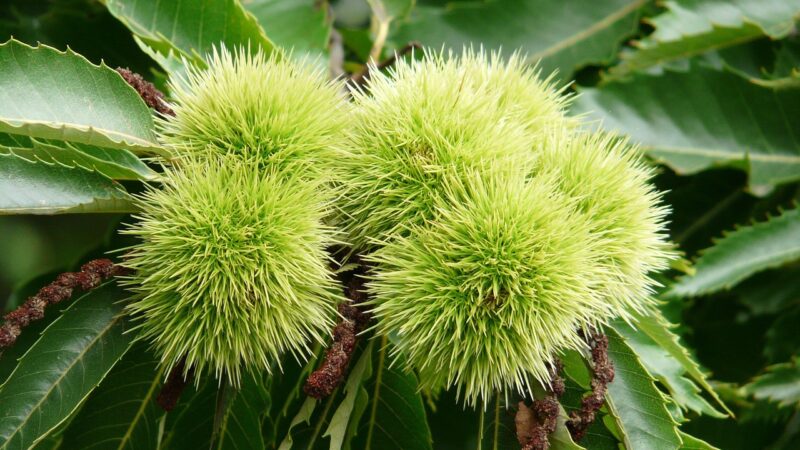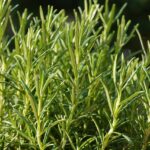Light requirements of the sweet chestnut

Understanding and providing for the light requirements of the sweet chestnut is one of the most fundamental aspects of its cultivation, directly influencing its growth, shape, and ability to produce a successful harvest. As a species that naturally evolved in forest environments, it has a distinct need for sunlight that dictates where it can be successfully grown. The energy captured from sunlight through the process of photosynthesis is the engine that drives all of the tree’s functions, from the creation of new leaves and branches to the development of energy-rich nuts. Therefore, meeting its light needs is not just beneficial, it is absolutely essential for its long-term health and productivity.
The sweet chestnut is an unequivocally sun-loving species that thrives in conditions of high light intensity. It requires a position in the landscape that provides full, direct sun for a majority of the day to reach its full potential. Insufficient light leads to a cascade of negative effects, including weak, elongated growth, sparse foliage, and a significant reduction, or even complete failure, of nut production. When planning a garden or orchard, the light requirements of the sweet chestnut must be a primary consideration, guiding the decision of where to plant this magnificent tree to ensure it has the resources it needs to flourish.
The need for light also has significant implications for how sweet chestnut trees are spaced and pruned. In an orchard setting, trees must be planted far enough apart to ensure that even when they reach their mature size, their canopies do not excessively shade one another. Proper pruning techniques are also employed to open up the canopy, allowing sunlight to penetrate into the interior of the tree. This not only improves the health of the inner branches but also ensures that the flowers and developing nuts throughout the entire tree receive enough light to mature properly, leading to a more abundant and evenly ripened harvest.
From the moment a seedling germinates to the decades of a mature tree’s life, light is the single most important environmental factor guiding its development. A young sapling will stretch towards the light to outcompete its neighbors, and a mature tree will arrange its leaves to maximize light interception. By appreciating this profound and constant need for sunlight, a grower can make informed decisions that will support the tree’s natural tendencies. Providing ample light is the first and most critical step in creating an environment where a sweet chestnut tree can not only survive but truly thrive.
The importance of full sun
The sweet chestnut is classified as a shade-intolerant species, which means it requires full and direct sunlight to achieve optimal growth and health. For a sweet chestnut, a “full sun” location is one that receives at least six to eight hours of unobstructed, direct sunlight per day during the growing season. This high level of light exposure is necessary to fuel the process of photosynthesis, whereby the tree converts light energy, water, and carbon dioxide into the sugars that serve as its food. These sugars are the building blocks for all growth, from the extension of roots and shoots to the production of leaves, flowers, and eventually, nuts.
More articles on this topic
When a sweet chestnut is planted in a location with insufficient light, the consequences are quickly apparent. The tree will exhibit etiolation, a condition where it produces long, thin, and weak shoots as it stretches in an attempt to find more light. The foliage will be sparse, and the leaves may be larger but thinner than those on a tree grown in full sun. This type of weak growth is more susceptible to damage from wind and pests and does not contribute to building a strong, sturdy tree structure. The overall vigor of the tree is compromised, and it will struggle to compete with surrounding vegetation.
The most significant impact of inadequate sunlight for those growing the tree for its harvest is on flowering and nut production. The formation of flower buds, which is essential for any future nut crop, is a very energy-intensive process that is highly dependent on the tree having a surplus of energy produced through photosynthesis. A tree growing in shady conditions will prioritize its limited energy reserves for basic survival and vegetative growth, often failing to produce any flowers at all. Even if some flowers are produced, poor light can lead to poor pollination and the abortion of the few nuts that do begin to form.
Therefore, when selecting a planting site, it is imperative to choose the sunniest location available. This is typically a spot with a southern or western exposure, far from the shade cast by buildings, fences, or other larger trees. It is also important to consider the future growth of both the chestnut tree and any surrounding vegetation. A spot that is sunny now might become shaded in a few years as neighboring trees grow taller. Long-term planning is essential to ensure that your sweet chestnut will continue to receive the full sun it needs throughout its long and productive life.
Light’s effect on growth and nut production
The quantity and quality of light a sweet chestnut tree receives have a direct and measurable effect on its physical structure and growth habit. A tree growing in an open, full-sun environment will typically develop a broad, spreading canopy with a thick, sturdy trunk and well-spaced branches, which is the natural and ideal form for the species. This structure is not only strong and resilient but also efficient at capturing sunlight across its entire surface. In contrast, a tree forced to grow in a more crowded or shaded setting will develop a taller, narrower form with a less dense canopy, as it allocates its resources to vertical growth in a race for light.
More articles on this topic
Sunlight is the critical trigger for the physiological processes that lead to nut production. The transition from juvenile to reproductive maturity in a sweet chestnut is influenced by a combination of age, size, and, crucially, the accumulation of sufficient energy reserves, which are a direct product of photosynthesis. Once mature, the initiation of flower buds for the following season occurs during the summer and is heavily dependent on the high light conditions of the current season. Abundant sunlight during the summer leads to a greater number of flower buds being formed, which directly translates to a greater potential for a large harvest the next year.
Furthermore, light plays a vital role during the current season’s nut development. After successful pollination, the developing nuts require a steady supply of energy from the leaves to grow and mature properly. Sunlight penetrating the canopy and reaching the leaves near the developing burrs is essential for this process. If these areas are heavily shaded, the tree may not be able to support the developing nuts, leading to a higher rate of premature nut drop and resulting in a smaller final harvest. An open, sun-filled canopy ensures that all parts of the tree are productive.
The quality of the nuts themselves is also influenced by sunlight. Nuts that develop in full sun tend to be larger and have a higher kernel-to-shell ratio than those that develop in shaded parts of the canopy. The sugars and starches that make up the delicious, edible kernel are produced in the leaves and transported to the nut, a process that is maximized under high light conditions. Therefore, ensuring ample sunlight exposure for your sweet chestnut is not just about getting a harvest, but about getting a high-quality, abundant harvest.
Spacing and canopy management
Given the sweet chestnut’s critical need for sunlight, proper spacing between trees is one of the most important considerations when planting an orchard or even just a few trees. You must account for the mature size of the tree, which can have a canopy spread of 15 meters or more. Planting trees too close together is a common mistake that leads to problems a decade or two later. As the canopies begin to touch and overlap, they will start to shade each other, leading to reduced light penetration, poor air circulation, and competition for resources. This results in reduced nut production, particularly on the lower and inner branches of the trees.
The recommended spacing for sweet chestnut trees in an orchard setting is typically a minimum of 12 by 12 meters, with some growers opting for even wider spacing of up to 15 by 15 meters to ensure long-term light availability. While this may seem like an excessive amount of space when planting small saplings, this foresight is crucial for the long-term productivity and health of the planting. Wider spacing allows each tree to develop its full, natural canopy shape and ensures that sunlight can reach not only the top of the canopy but also the sides and lower branches for decades to come.
In addition to initial spacing, canopy management through pruning is another key strategy for optimizing light interception. The goal of pruning a mature sweet chestnut is to maintain an open canopy structure that allows sunlight and air to penetrate into the interior of the tree. This is typically done in the late winter during the dormant season. Pruning involves selectively removing branches that are crossing, rubbing, or growing inwards, as well as thinning out areas of the canopy that have become overly dense. This prevents the interior of the tree from becoming a non-productive “shade-out” zone.
By creating “windows” of light within the canopy, you stimulate the growth of new, productive fruiting wood in the tree’s interior and ensure that the leaves in these areas can photosynthesize efficiently. This contributes to the overall energy budget of the tree and supports the even ripening of nuts throughout the entire canopy, not just on the outer edges. This combination of wide initial spacing and a regular program of maintenance pruning is the most effective way to manage the light environment and maximize the health and productivity of your sweet chestnut trees.


















